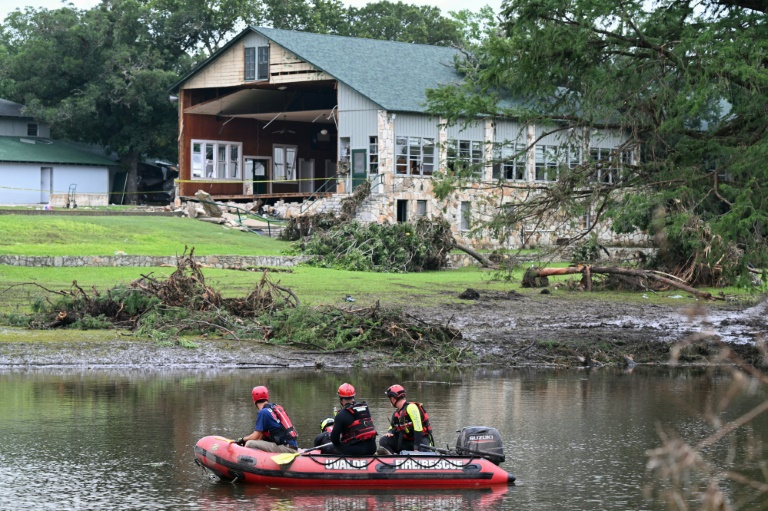Texas Floods Unleash Torrent of Misinformation on Social Media
The devastating floods that ravaged Texas, claiming over a hundred lives and leaving a trail of destruction, have not only wreaked havoc on the ground but also triggered a deluge of misinformation across social media platforms. As rescue workers tirelessly searched for missing individuals, a battle against false narratives unfolded online, with both left- and right-wing users contributing to the spread of misleading information. The catastrophe, which tragically claimed the lives of numerous children and counselors at a riverside summer camp, served as a stark reminder of the dangers of misinformation during times of crisis.
Left-leaning accounts on platforms like X, formerly known as Twitter, propagated the unsubstantiated claim that staffing cuts at the National Weather Service (NWS) under the Trump administration had hampered its forecasting capabilities, contributing to the disaster. This assertion, while aligning with criticisms of budget cuts to government agencies, lacked factual basis. Experts affirmed that despite facing resource constraints, NWS forecasters provided ample warning of the impending floods. Climate scientist Daniel Swain emphasized the timeliness and accuracy of the warnings, highlighting that the catastrophic flooding was not a result of prediction failures but rather challenges in disseminating the warnings effectively.
Conversely, the right-wing segment of social media embraced a different brand of misinformation, propagating the conspiracy theory that the government had intentionally caused the floods through cloud seeding, a weather modification technique. This baseless claim echoed similar conspiracy theories surrounding past natural disasters, including Hurricane Ian and floods in Dubai. Multiple experts refuted any connection between cloud seeding and the Texas floods, underscoring the lack of scientific basis for these allegations.
The proliferation of these opposing narratives underscores the increasing challenge of combating misinformation in the digital age, particularly during times of crisis. As natural disasters unfold, social media platforms often become breeding grounds for baseless claims and conspiracy theories, fueled by the emotional intensity of the situation and the rapid spread of information.
Adding to the complexity of the situation, even traditional media outlets found themselves entangled in the misinformation web. Kerr County Lead, a local publication, retracted a story about the miraculous rescue of two girls clinging to a tree after it was revealed to be false. The story, which had originated on social media, gained widespread traction before being debunked by local officials. This incident highlighted the challenges faced by journalists striving for accuracy in the face of rapidly evolving events and the pervasive nature of misinformation online.
The Texas floods exemplify the escalating threat of misinformation in the aftermath of natural disasters. As information spreads rapidly across social media, discerning truth from falsehood becomes increasingly difficult. This underscores the urgent need for critical thinking, media literacy, and responsible information sharing practices. While platforms grapple with content moderation and fact-checking, individuals bear the responsibility of verifying information before sharing it, especially during times of crisis. The convergence of natural disasters and the spread of misinformation presents a complex challenge, demanding collective efforts to ensure that accurate information prevails.


